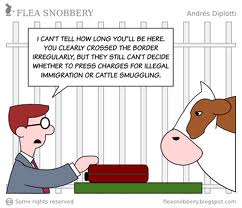Hi, everyone 🙂 This week I am going to post about ‘Moral minefields: legal and ethical dilemma’ and this week’s reading is about the relationship between the media and the law was explored. The lesson here is that beyond looking at the laws of the jurisdictions in which your news piece will be published or broadcast, it is also important to understand the local socio-political culture and context of those nations.
However, ethical and moral dilemmas often arise as journalists have a habit of publishing information after the arrest, for the sake of ‘public interest’, or alternatively have a habit of publishing information before the arrest which is unnecessary in telling the story, but makes the story more ‘newsworthy’. This matter brings to the surface issues regarding the professional standards of journalists, and to what extent ethics and morals prevail over the legal loopholes and toothless tiger codes of conduct established by the Australian Press Council. Sub judice is enforced so that everyone is seen to be innocent until proven guilty. However, it would seem that this notion is farcical as suspected criminals are often slandered in the media, accused of committing a crime and often judged by the public before the courts have an objective and evidentiary opportunity to do so. Consequently, I definitely believe that legislation regarding sub judice needs to be better assessed in order for the legal system to be truly fair and just.
Here, I will provide two pictures which are described clearly what is legal dilemma and ethical dillema.
1. Legal dilemma
2. Ethical dilemma
Moreover, Sally Walker (1989) defines journalism law as those related to defamation, court reporting, contempt of court and parliament, obscenity, media regulation, freedom of information legislation, intellectual property, trespass, and breach of confidence, among others. A common technique used by judges and educators to view the legal position of the journalist is to frame it in terms of the range of rights and responsibilities of journalists. Journalists are given special privileges in the courtroom such as the provisions of special seating, note-taking and access to court documents that would not be afforded to the ordinary citizens. Journalists are afforded such rights if they perform them responsibly. When they begin to perform them irresponsibly, the balance of the law normally shifts in favour of the other citizens whose rights are being infringed. It then comes down to the notion of is it in ‘the public interest’. Also, The freedom of information laws protects the essential public interest and the private business affairs of persons. The rights of this act apply to all citizens not just journalists. There is a down side to the FOI , it can be quite costly as an application is $30 and processing charges for allocating the documents are $15 per hour.
The basic idea of defamation law is simple. It is an attempt to balance the private right to protect one’s reputation with the public right to freedom of speech. Defamation law allows people to sue those who say or publish false and malicious comments. Anything that injures a person’s reputation can be defamatory. If a comment brings a person into contempt, disrepute or ridicule, it is likely to be defamatoryThe fact is, nearly everyone makes defamatory statements almost every day. Only very rarely does someone use the law of defamation against such statements. There are two types of defamation : Libel and slander. Most media organisations avoid making retractions. Sometimes they will defend a defamation case and pay out lots of money rather than openly admit being wrong. Media owners have resisted law reforms that would require retractions of equal prominence to defamatory stories.
Journalists must be fair and accurate in reporting to reframe from being sued for defamation. And Journalists must behave in a certain way in their reporting to society to do so. So defamation can be clearly defined as a civil or wrong committed by publication and generally involves the indication of a person’s reputation. There is a criteria to establish defamation which consists of there being a publication and identifiable person or persons. Journalists and other media workers are often in the business of publishing defamatory articles and sensationalizing stories about other people and what they do. Before doing so journalists need to ask themselves, is the material potentially defamatory and if so, are there any defences available.
Overall, the key message for journalists and other online researchers is that they must have a sound understanding of the law in the jurisdiction in which they work. It is also important when writing material for publication that is critical of individuals in a particular jurisdiction, that writiers must present their work in such a way that it would be legally acceptable or “safe” at law in the primary jurisdiction in which the criticised individual resides and does the bulk of their business and/or practices their profession.
This is end of this week’s blog. Feel free to comment on here 🙂
Thank you


Hey Yale! It was a great presentation! Yes, I agree that journalists must be fair when reporting but, what if it infringes on their rights? In my opinion, morality is self-dependant – based on each and everyone’s own values. what do you think?
Hi Yale,
I would like to refer to your point on the court giving journalist special privileges for note-taking and viewing legal documents. It is encouraging to know that journalist are given these rights to aid their occupation and achieve the fundamental aim of journalism, that is to inform the public and be the fourth estate. I do wish journalist will uphold their integrity and abide strictly to journalism ethics instead of abusing their rights and power to influence the public.
– Andy Wang
(www.cmns3420andy.blogspot.com)